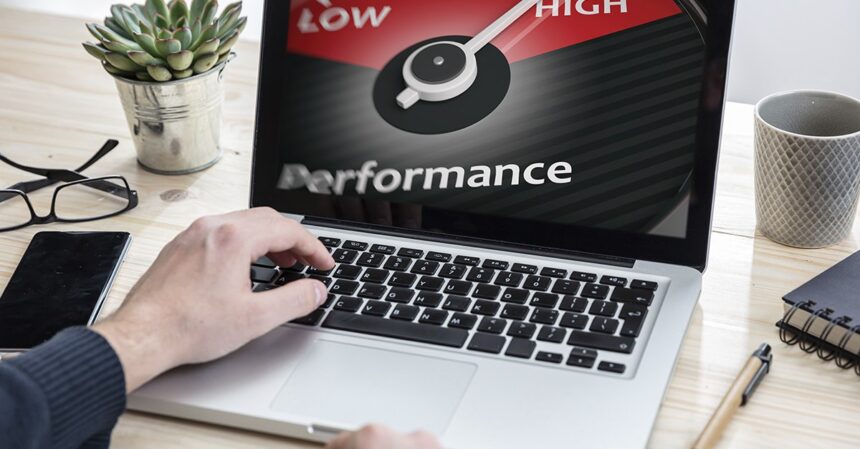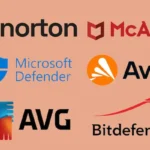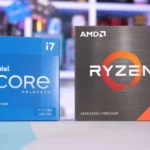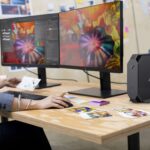Hey everyone, it’s your favorite productivity expert back with another in-depth look. Today, we’re going to talk about something that really matters to me: how to make your computer run better and, as a direct result, be much more productive. In today’s fast-paced world, let’s be honest: a slow computer is like having a ball and chain on your ankles. It takes away your energy, stops your progress, and makes it harder for you to reach your goals.
I recently read a great article called “How to Improve Computer Performance and Be More Productive.” For the sake of brevity, let’s call it the “Performance Productivity Guide.” There is no link here, as per instructions, but you can imagine a well-known tech blog like TechCrunch or The Verge. It really hit home for me and reinforced the basic ideas behind digital efficiency. This post is based on that main idea and adds my own thoughts and useful tips to help you boost your computer’s performance and get more done in your daily life.
The Symbiotic Relationship Between Computer Performance and Productivity
It’s important to know that computer performance and being productive are two sides of the same coin. A well-oiled machine that runs smoothly and efficiently lets you focus on the task at hand without getting frustrated by delays or technical problems. On the other hand, a computer that is slow and unresponsive makes you angry, breaks your flow, and makes you waste time waiting for programs to load, files to save, or web pages to load.
The “Performance Productivity Guide” probably talked about this important connection, showing how spending time optimizing your system is an investment in your own health and productivity. When your tools work well together, you can focus your mental energy on coming up with creative solutions to problems and reaching your goals instead of fighting with technology. This is the main idea behind how we make computers work better and get more done.
Finding the Digital Drag: Finding Performance Bottlenecks
It’s important to know what’s making your computer slow down before we talk about solutions. The “Performance Productivity Guide” probably listed some common problems, and I’ll add my own thoughts here. Finding these bottlenecks is the first step toward effective optimization, which will help you be more productive and improve your computer’s performance.
Things That Often Slow Down Performance:
Hard Drive Full: A hard drive that is almost full can slow down your computer a lot. When your computer has trouble finding free space, everything slows down. (There will be a future blog post about how to manage files well.)
Too Many Startup Programs: When you start your computer, dozens of programs that you don’t need right away can use up system resources.
Software That Uses a Lot of Resources: Some programs, especially those for video editing or graphic design, can use a lot of memory and processing power.
Old Software and Drivers: Older versions of operating systems, apps, and device drivers may not work as well and may have bugs that slow things down.
Malware and Adware: Malware can run in the background, using up resources and possibly putting your system’s security at risk.
Fragmented Hard Drive (for traditional HDDs): Files can become fragmented over time, which makes it take longer for your hard drive to get to data. (Note: This isn’t as big of a problem with newer SSDs.)
Not enough RAM: Random Access Memory (RAM) is very important for doing more than one thing at a time. When your computer runs out of RAM, it will use the hard drive as virtual memory, which is much slower.
Dust Buildup (for Desktops and Laptops): Dust inside can make parts overheat, which slows down performance.
You can start to figure out what’s slowing down your computer by knowing about these possible problems. Then you can take specific steps to make your computer run faster and be more productive.
Useful Tips for Making Your Computer Work Better
Now for the good stuff: the things you can do right now to give your computer a boost and improve computer performance. The “Performance Productivity Guide” probably talked about a lot of these, and I’ll add my own tips and tricks to help you be more productive.
Get Rid of the Clutter in Your Digital Life:
Remove Programs You Don’t Use: Look closely at the programs you have installed. If you haven’t used something in months, be honest and uninstall it. This clears up space on your hard drive and cuts down on background processes. (Backlink to a previous post about important software for getting things done.)
Manage Startup Programs: Use your operating system’s task manager (Ctrl+Shift+Esc on Windows, Activity Monitor on macOS) to stop programs that you don’t need from starting up when your computer does. Only the apps that are absolutely necessary should start up on their own.
Delete Temporary Files: Your web browsers and operating system make temporary files that can build up over time. To get rid of these files on a regular basis, use built-in tools like Disk Cleanup (Windows) or manage website data in your browser settings.
Get the most out of your hard drive:
Clear Up Disk Space: Try to keep at least 15–20% of your hard drive space free. Get rid of big, unneeded files, move media to external storage, or think about using cloud storage.
Defragment Your Hard Drive (HDD only): If you have a traditional hard drive (HDD), you should use the built-in defragmentation tool on a regular basis. This puts files in a new order so you can get to them faster. You don’t need to defragment Solid State Drives (SSDs), and doing so can actually make them last less long.
Think about getting an SSD: If your computer still has a regular hard drive (HDD), getting a Solid State Drive (SSD) can give it one of the biggest performance boosts you can make. SSDs read and write data much faster, which makes booting up, loading applications, and overall responsiveness faster. (Source link to a well-known review site that compares HDDs and SSDs).
Update Your Software:
Turn on automatic updates: Make sure that your operating system, web browser, and other important software are all set to update on their own. Updates usually fix bugs, make things run better, and add security patches.
Update Drivers: Check for and install new drivers for your graphics card, network adapter, and other hardware components on a regular basis. Drivers that are out of date can cause problems with compatibility and performance.
Be Smart About How You Use Resources:
Close Tabs and Programs You Don’t Use: If you’re not using a program or tab, close it. Every program that is open uses system resources.
Keep an Eye on Resource Usage: Use the activity monitor or task manager to find out which programs are using the most CPU and memory. If a program is always using up resources, even when it’s not doing anything, you should look into other options or possible problems.
Don’t Run Too Many Resource-Intensive Tasks at Once: If you’re editing a video, don’t run a bunch of other demanding programs at the same time.
Keep Malware Away from Your System:
Install and Keep Antivirus Software Up to Date: A good antivirus program running in the background can find and get rid of harmful software that can slow down your computer.
Be Careful Online: Don’t click on links that look suspicious, download files from sites you don’t trust, or open email attachments you weren’t expecting.
Run regular malware scans: It’s a good idea to run full system scans every now and then, even if you have real-time protection.
Clean Up Your Browser:
- Manage Browser Extensions: Having too many extensions in your browser can make it slower. If you don’t use an extension often, turn it off or delete it.
- Clear Browser Cache and Cookies: Your browser stores cache and cookies over time, which can sometimes cause problems with performance. Every so often, clear them out.
- When software changes aren’t enough, think about the hardware:
- Upgrade RAM: If you often run more than one program or work with big files, adding more RAM to your computer can make it much better at multitasking. To find out what kind and how much RAM your motherboard can use, look at the specifications for your system.
- Think about upgrading your graphics card (if you can): If you play games or use programs that require a lot of graphics power, upgrading your graphics card can make a big difference in how well those programs work.
Making computers work better to boost productivity
Of course, the main goal of these performance improvements is to become more productive. You feel the following when your computer is working well:
- Less Time Spent Waiting: You won’t have to watch loading wheels spin anymore. You have more time and mental energy because tasks get done faster.
- Better Focus: You can focus on your work better because you don’t have as many technical problems.
- More productive: You can get more done in less time, which gives you a greater sense of accomplishment and keeps you moving forward.
- Less Stress: A computer that responds quickly makes work less frustrating and helps create a more positive and productive environment.
You can improve computer performance and be more productive in all areas of your digital life by using the tips above, which are based on the “Performance Productivity Guide” and my own experience.
Making it a Habit: Keeping Your Computer Running Well Over Time
Optimizing your computer is not something you do once and then forget about. Make these things a regular part of your digital routine to keep your performance at its best and stay productive:
Plan Regular Cleanups: Set aside a few minutes each week or month to remove programs you don’t use, delete temporary files, and control which programs start up when you turn on your computer.
Be on the lookout for software updates: Make sure that automatic updates are turned on and check for driver updates every so often.
Use Safe Browsing Habits: Be careful about what you click on and download when you’re online.
Check on the health of your system: Keep an eye on your memory, CPU, and disk space to catch problems before they get worse.
You can keep your computer a powerful and useful tool that helps you improve computer performance and be more productive for years to come by making these small but regular efforts.
Your Journey to Better Productivity Starts Now
So, there you have it: a complete guide to improving computer performance and getting more done based on the main ideas of articles like the made-up “Performance Productivity Guide” and my own practical tips. If you take the time to follow these tips, your computer will definitely run faster and you’ll be more productive overall.
A faster computer isn’t just about saving a few seconds here and there; it’s about getting your focus back, lowering your stress, and finally reaching your full potential. Today is the day to start cleaning up, organizing, and keeping your digital workspace in good shape. This will make your computing experience more productive and fun.
What are your best tips for making your computer work better? Please share them in the comments below! (Backlink to the comments area). If you found this post helpful, please share it with your friends and coworkers who also want to get more done and make their computers run faster! (Social media sharing buttons here, but no real links.)
Ways to Make Your Computer Work Better and Get More Done
In the fast-paced digital world of today, your computer is more than just a tool; it’s where you work, be creative, and connect with others. But what do you do when your command center starts to slow down? A slow computer isn’t just a little annoying; it stops you from getting things done. Every time your screen freezes, your response is delayed, or your loading time is painfully long, it takes away from your focus and productivity. This full guide will look at the complicated connection between computer performance and productivity and give you useful, doable steps to improve computer performance and be more productive.
We’ll go over the main ideas in the article “How to Improve Computer Performance and Be More Productive” in more detail. This will give you a complete plan for getting your time back and getting more done. This post is for you if you’re a student, a professional, a creative, or just someone who wants to get things done without the digital drag.
Why a Slow Computer Makes You Less Productive
It’s not just a feeling that a slow computer makes you less productive; it’s a well-known fact. A computer that is slow can:
Break Your Focus: The brain works best when it is in a state of flow, which is when it is deeply involved in a task. When your computer stutters, it breaks your focus and makes it hard to get back into the groove.
Waste Valuable Time: Every second you spend waiting for apps to load or files to save adds up to minutes, and eventually hours, of lost time over the course of a week or month.
Make You More Stressed and Frustrated: Having to deal with a slow computer all the time can make you more stressed and frustrated, which can hurt your health in general.
Hinder Creativity: A slow computer can be a big problem for people who work in creative fields because it stops ideas from flowing freely and makes the creative process frustrating.
You’re not just fixing a technical problem when you take steps to make your computer work better; you’re also investing in your own peace of mind and productivity.
Easy Ways to Make Your Computer Run Faster
There are a number of easy but very effective things you can do right now to speed up your computer without spending a lot of money.
Clean Up Your Desktop
Your computer’s desktop is like your real-life desk. It’s hard to find what you need on a messy desk, and it can also be a source of distraction. Your computer may also run more slowly if your desktop is full of files and shortcuts because it has to load all of those icons every time you turn it on.
Tip for Real Life: Spend 15 minutes cleaning up your desktop. Make folders for different types of files, like “Work,” “Personal,” and “Photos,” and then put your files in those folders. Get rid of any shortcuts that you don’t need. A clean desktop makes you happy and speeds things up.
Get rid of programs you don’t need
Many computers, especially newer ones, come with software that you’ll never use. This “bloatware” can run in the background and use up important system resources.
Helpful Hint: Check out the list of programs you have installed. You can do this in Windows by going to “Apps & features” in the settings. You can look in the “Applications” folder on a Mac. Uninstall any programs you don’t know about or haven’t used in a long time.
Control Programs That Start Up
When you turn on your computer, some programs are set to start up automatically. This can be helpful for programs you use every day, but it can also make your computer take a long time to start up and use up resources.
Helpful Hint: You can control startup programs on both Windows and macOS. You can find this in the Task Manager’s “Startup” tab (Ctrl + Shift + Esc) in Windows. You can go to “System Settings” > “General” > “Login Items” on a Mac. From there, you can turn off any programs that you don’t need to run when you log in.
Get rid of your browser’s cache and cookies
Your web browser saves information from the sites you visit so that they load faster the next time you visit them. But over time, this cached data can build up and make your computer and browser run more slowly.
Tip: Clear your browser’s cookies and cache often. In your browser’s settings, look for “Privacy and security” or “History” to find this option.
Advanced Ways to Make Your Computer Work Faster
It’s time to get to work and try some more advanced methods if the quick fixes haven’t helped you get the performance boost you want.
Defragment Your Hard Drive (for HDDs)
If your computer has a regular hard disk drive (HDD), your files can become fragmented over time. This means that the different parts of a file are spread out across the drive. This makes it take longer for your computer to open the file.
Tip: Windows comes with a tool that can defragment your hard drive. You can find it by looking for “Defragment and Optimize Drives” in the Start Menu. Note: Defragmenting a solid-state drive (SSD) can shorten its life, so don’t do it.
Add More RAM
Your computer’s short-term memory is called Random Access Memory (RAM). It is where your computer keeps the information for the files and programs you are using right now. If you often have a lot of programs and browser tabs open at the same time, your computer may be running out of RAM, which can make it slow down.
Tip: One of the best ways to improve computer performance without spending a lot of money is to add more RAM. You can find out what kind of RAM your computer uses and how much you can add by looking at the documentation or using a tool like Crucial’s System Scanner.
Get a Solid-State Drive (SSD)
If your computer still has an HDD, switching to an SSD is one of the best things you can do to make it better. SSDs are much faster than HDDs, so your computer will start up faster, apps will load in a fraction of the time, and your whole system will feel more responsive.
Tip: This is a more complicated upgrade, but it’s worth the time and effort. There are a lot of online guides that will show you how to clone your old hard drive to a new SSD and put it in your computer.
Make sure your operating system and drivers are up to date
Updates to software often fix bugs and improve performance, which can make your computer run better. This is true for both your operating system (Windows or macOS) and the drivers for your computer’s hardware.
Tip: Turn on automatic updates for your operating system. You should also check the website of the company that made your computer every now and then to see if there are any new drivers, especially for your graphics card.
H2: Productivity Hacks for the Modern Professional: Beyond the Machine
It’s only half the battle to make your computer run better. You also need to improve your own habits and workflows if you want to be more productive.
The Pomodoro Method
The Pomodoro Technique is a way to manage your time by using a timer to break your work into 25-minute chunks, with short breaks in between. You can use this method to keep your mind on track and avoid getting burned out.
Helpful Hint: You can use a timer on your phone or one of the many Pomodoro apps or websites that are out there. Work for 25 minutes, then take a break for 5 minutes. Take a longer break of 15 to 30 minutes after four Pomodoros.
The best thing about keyboard shortcuts
You lose a little bit of time every time you move your hand away from the keyboard to use the mouse. These seconds add up. You can be a lot more productive if you learn keyboard shortcuts for the programs you use the most.
Tip: To get started, learn the basic keyboard shortcuts for your operating system and web browser. Then, learn the shortcuts for the programs you use most often at work. A quick search online will show you lists of shortcuts.
Control Your Email Inbox
One of the biggest time-wasters is email. If your inbox is always pinging, it can be hard to focus on the most important things you need to do.
Tip: Instead of leaving your email open all the time, try checking it at certain times of the day. Automatically sort incoming messages with filters and folders. Also, when you check your email, follow the “two-minute rule”: if you can answer an email in less than two minutes, do it right away. Put it on your to-do list if it will take longer.
Use apps and tools that help you get more done
There are a lot of apps and tools that can help you get more done. There are tools for almost every productivity problem, from to-do list apps and note-taking software to password managers and apps that block distractions.
Helpful Tip: Todoist, Trello, Evernote, and Freedom are some of the most popular productivity apps. Do some research to find the tools that work best for you.
Putting It All Together: A 30-Day Challenge to Make Your Computer Faster and You More Productive
Are you ready to do something? Here’s a 30-day challenge to help you get more done and make your computer work better:
Week 1: The Quick Fixes. This week, focus on the quick fixes that were listed above. Get rid of things you don’t need from your desktop, uninstall programs you don’t need, manage your startup programs, and clear your browser cache.
Week 2: The Deep Clean. This week, work on the more difficult methods. If you have an HDD, defragment it. Then look into whether you need more RAM or an SSD.
Week 3: Productivity Habits. This week is all about the things you do every day. Use the Pomodoro Technique, start learning keyboard shortcuts, and set up a new way to handle your email.
Week 4: Tool Time. Look into and try out some new apps and tools that can help you get things done. Find the ones that work for you and add them to your daily routine.
At the end of this 30-day challenge, your computer will be faster and work better, and you’ll have learned how to be more productive in the long run by changing your habits and ways of working.
Conclusion: Your path to peak performance begins now
A computer that runs slowly is not only a technical issue; it’s also a productivity issue. You’re directly investing in your own health, focus, and productivity by taking the time to improve your computer’s performance. You can make your computer faster and yourself more productive by making small changes to your software, upgrading your hardware, using smart productivity hacks, or completely changing the way you use your computer.
Don’t let a slow computer stop you any longer. Start using these tips right away and see how a digital workspace that runs smoothly can change your life.
Source Links:
- How to Improve Computer Performance and Be More Productive – Crucial.com
- Tips to improve PC performance in Windows – Microsoft Support
- 12 Simple Tips to Speed Up Windows – PCMag







